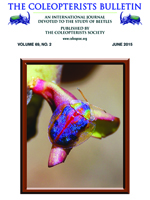Burying beetles in the genus Nicrophorus F. are necrophagous insects with many mechanisms to reduce the negative impact of competitors. The most notable mechanism is parental care provided by males and females, but equally important are burying beetles' preferences for habitat and carcass size, as well as seasonal activity. In this research, in close-to-natural conditions, we analyzed changes in activity for three burying beetle species typical to Poland (Nicrophorus vespillo L., Nicrophorus vespilloides Herbst, and Nicrophorus humator Gleditsch) at the beginning of seasonal activity on both small (Mus musculus L.) and large (Rattus norvegicus Berkenhout) carcasses. Observations during two seasons from the second week of April to the first week of June were conducted with cages placed in meadow, forest, and forest edge. Shifts among activity peaks of the burying beetle species were observed. The major differences among species which prefer different types of habitats are reported. These results suggest that the activity of burying beetles in the early phase of each season probably did not depend on the presence of other burying beetle species but on other factors such as post-winter habitat dynamics, including mean temperature. We observed few cases of a significant correlation between temperature and numbers of burying beetles. In addition, we observed changes in spatial distribution of burying beetles during the first week of activity. Differences among species were also visible in the number of individuals attracted by carcasses of different size and in the day of carcass colonization.
How to translate text using browser tools
18 June 2015
Differences in Early Seasonal Activity of Three Burying Beetle Species (Coleoptera: Silphidae: Nicrophorus F.) in Poland
Arkadiusz Urbański,
Edward Baraniak
ACCESS THE FULL ARTICLE

The Coleopterists Bulletin
Vol. 69 • No. 2
June 2015
Vol. 69 • No. 2
June 2015
behavior
carcass preference
edge effect
spatial distribution




